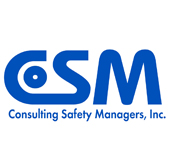What’s the difference?
Let’s explore some differences between a traditional safety program and a management system
Reasons for Consideration
Organizations have many reasons to consider the upside of a management system for achieving safety. Most of our clients begin their safety improvement journey from one of three starting points:
- A traditional safety program is not working for them or they have outgrown it.
- A traditional safety program necessitates conversion to a management system to keep up with quality and operations.
- They need their first professionally-prepared safety approach and practices.
In all three situations, CSM recommends designing and implementing a management system for safety over a traditional safety program.
A management system is the modern way to achieve safety inside an organization. The traditional safety program is becoming old-fashioned.
A Management System is More Effective
When we look at the before and after safety performance of our clients who switch from traditional safety programs to management systems, management systems outperform traditional safety programs in five key ways:
- Higher rate of safe behaviors
- Better controlled severe injury potential (SIP)
- Lower injury rate
- Happier user experience
- Higher audit scores
Three to five years into the first-generation management system, 100% of our clients say they made the right decision for the organization to upgrade from a traditional safety program to a management system.
Key Differences Between Two Approaches
A management system and a traditional safety program are different approaches to achieving safety. When we look at our clients’ before and after situations, here are some comparisons after switching to a management system.
The traditional safety program drove compliance. The new management system drives continuous improvement.
The engine of a traditional safety program were rules. The engine of a management system are processes.
The organizational mindset from a traditional safety program was static, adherence thinking. The organizational mindset with a management system is dynamic, risk thinking.
People under a traditional safety program were more likely to hide problems to avoid non-compliance. People contributing to a management system are more likely to identify problems to continuously improve.
How Leaders Feel About Their New Management Systems
The leaders of our clients who switched from traditional safety programs to management systems saw some stark overall changes.
Switching from compliance to continuous improvement made the organization more collaborative and mindful about safety.
Changing their safety engine from rule-driven to process-driven made their people far more consistent about safety.
Upgrading from adherence to risk thinking changed their mindset from reactive to proactive.
Overall, the leaders say that their organizations see a superior conversion of their effort into results. The change from a traditional safety program to a management system improved their safety performance.
Next, let’s take a look at the universal safety processes comprising a management system.

